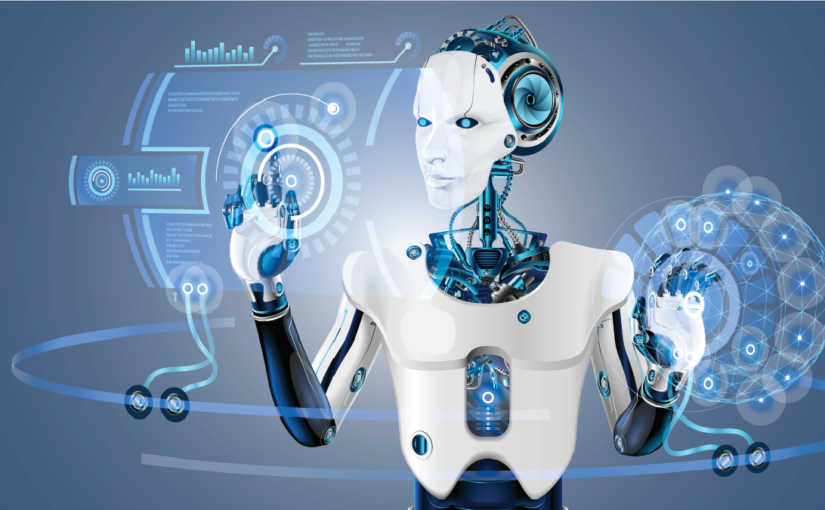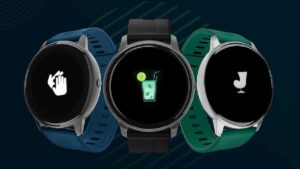Robotic Process Automation (RPA): The objective of implementing RPA is to replace repetitive, a boring clerical task performed by humans, with a virtual workforce.

Understanding Robotic Automation Process (RPA)
Robotic process automation or RPA is defined as the application of software and technology along with artificial intelligence to carry out repetitive tasks quickly, effortlessly, and accurately.
Robotic process automation (RPA) helps organizations to automate high volume, repeatable workflow such as for infrastructure, back-office process, which are labour-intensive. RPA uses software enabled with artificial intelligence (AI) and machine learning capabilities to automate tasks and do not require humans to perform.
The objective of implementing RPA is to replace repetitive, boring clerical task performed by humans, with a virtual workforce. RPA does not require any direct access to the code or database of the applications neither the development of code. RPA is also non-intrusive in nature and leverages the existing infrastructure without causing disruption to underlying systems, as it will be difficult and costly intensive to replace.
Read More: Apple MacBook New Security Feature: All you need to know
RPA software is primarily not part of an organization’s IT infrastructure, but sits on top of it, enabling an organization to implement the technology quickly and efficiently without changing the existing infrastructure and systems.
The core application of RPA is to act as a virtual worker and support humans in mundane and repetitive tasks.
BPA can be described as an umbrella term for a wide range of process automation technologies
DPA is the evolution of Business Process Management (BPM) as the need for businesses to automate processes as part of the digital revolution at a rapid pace. Businesses are therefore focusing on digitizing their operations to become more customer-centric and responsive.
McKinsey & Co. describes IPA as “an emerging set of new technologies that combines fundamental process redesign with RPA and machine learning. IPA is also represented as the evolution of RPA where it merges with intelligence through ML and AI to make the process smart, efficient and effective.
According to Gartner, RPA is the fastest-growing segment of the global enterprise software market. As per their estimation, RPA grew 63% in 2018 to $846 million with all top 3 vendors growing >40%.
RPA growth projections:
1. Forrester: $250 million in 2016
2. Gartner: $1.3 billion by 2019
3. Forrester: $2.9 billion by 2021
4. IDC: $3.5B in 2022
5. Global Market Insights Inc: $5 billion by 2024.
6. KeyBanc Capital Markets: $100 billion by 2029
RPA Services Market Will Grow To Reach $12 Billion By 2023 – Forrester. Gartner has predicted that by 2020, 40 per cent of large enterprises will deploy RPA software, up from less than 10 per cent today.
• McKinsey & Co. estimates that automation systems could undertake the work equivalent of up to 140 million jobs by 2025
• According to a report by Everest Group, Robotic Process Automation is likely to lead to a cost reduction of close to 65%
The seven predictions of RPA by Automation Anywhere
The need for RPA in optimizing business processes:
1. Not all humans are good at multi-tasking, whereas robots are capable of handling multiple tasks efficiently.
2. RPA has can work tirelessly for 24 hours a day, whereas a human can work 8 hours a day
3. The average productivity of a robot is close to 100 per cent whereas the average productivity of a human is 60%
4. Robotic Process Automation reduces the cost of businesses
5. Robotic Process Automation helps to enhance the commercial outcomes of the companies
6. Robotic Process Automation helps to decrease e-waste. Use of papers is known as e-waste which is one of the biggest threat to our environment
7. Robotic Process Automation decreases output variability. Duplicity is one of the reasons to get an inaccurate output. Reduction in manual errors leads to higher quality data, enabling analyses that are more reliable.
8. Digitization helps to save and secure data into many forms and it is convenient to keep track of data as it supports cloud for storage
9. Robotic Process Automation provides tools to store data so that you can analyze data when you require insight, reporting or organizing tasks
10. Robotic Process Automation uses bots to handle queries of users and tasks can be done in lesser time and in an accurate and effective manner. Thus provides a higher and effective resolution of customer query and there higher engagement and satisfaction.
RPA Software Market Share by Revenue, Worldwide (Millions of Dollars) – Source Gartner
Geo Analysis:
• North America continued to dominate the RPA software market, with a 51% share in 2018
• Western Europe held the No. 2 position, with a 23% share
• Japan came third, with adoption growth of 124% in 2018
1. UiPath RPA: UiPath is a leading Robotic Process Automation vendor providing a complete software platform to help organizations efficiently automate business processes.
2. Automation Anywhere: The Automation Anywhere end-to-end cognitive platform helps to automate the business process. Automation Anywhere RPA + AI boosts productivity, lowers costs and empowers human workers, minimizes human error and reduces time-to-market.
3. Blue Prism: Blue Prism® Robotic Process Automation software provides businesses and organizations with a more agile virtual workforce.
RPA Facts:
1. Blue Prism founded in 2001 is the oldest RPA company
2. Significant growth of the RPA industry started in the 2010s
3. RPA platforms were originally built on the .Net framework to leverage its close integration with the Windows OS.
4. Based on the popularity of Python as a programming language, the new RPA platforms are being built on top of Python
Simple RPA Bots
Hybrid RPA Bots
Cognitive RPA Bots
The RPA next steps:
• No code RPA: Enabling companies to rely on cheaper resources and reduce RPA development time
• Self-learning RPA: Automating process modelling using system logs and videos of users working on the process
• Cognitive RPA: Enriching RPA with advanced functionality such as image processing and Natural Language Processing
• RPA marketplaces: Rolling out RPA solutions require significant programming and customizations. Since RPA companies can not possibly build a custom solution for every process or task that will be automated, they rely on vendors to provide customized reusable solutions. Different names for reusable RPA plugins include app, dashboard, workflow, component, activity bot, solution, component, connector, asset, or plugin.
Learning Opportunities
Automation Anywhere Launches Free Community Edition for Small Businesses, Developers and Students. The Community Edition will have access to the full suite of Automation Anywhere products, including RPA, IQ Bot (AI), Bot Insight (embedded analytics) and Bot Store, the industry’s first online marketplace for pre-configured downloadable RPA bots. http://www.automationanywhere.com/
UiPath offers a community edition/ trial version. This trial version for limited personal use only.
The author of this article is Anshuman Dutta (@Anshumandutta), an engineer by default, marketer by opportunity, seeker of knowledge by choice. He believes that enlightenment so far has been a myth, who is amazed at the pace with which technology is galloping. Just like a ‘Jajabor’ (wanderer) Anshuman trusts that the journey will one day lead to the culmination of micro-moments of truth and happiness.




















Helpful information